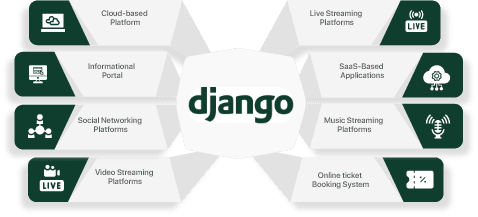Aytyapi Insights
Exploring the latest trends and updates in technology and lifestyle.
Django Delights: Whipping Up Web Wonders
Discover the magic of Django! Unleash your creativity and whip up stunning web applications with our expert tips and tricks.
Getting Started with Django: A Beginner's Guide to Web Development
Getting started with Django can seem daunting for beginners, but with the right guidance, you can quickly grasp the essentials of this powerful web framework. Django is a high-level Python web framework that promotes rapid development and clean, pragmatic design. Its batteries-included philosophy provides built-in features like an administrative interface, ORM, and URL routing—making it an excellent choice for web development. To kick off your journey, ensure you have Python and pip installed on your system, then use the command pip install django to set up your environment.
Once you've installed Django, the next step is to create your first project. Begin by running the command django-admin startproject myproject, where myproject is the name of your project. This action creates a new directory structure with essential files to get you started. You can then navigate into your project folder and run python manage.py runserver to start the development server. From there, you can access your new Django application in your web browser at http://127.0.0.1:8000/. As you progress, explore the powerful features of Django such as views, templates, and models, which will enable you to build fully functional web applications.

Top 10 Django Packages to Supercharge Your Web Applications
If you're looking to enhance your web applications, leveraging the right tools is crucial. Django, being a robust web framework, offers numerous packages that can significantly streamline development processes. Below are the Top 10 Django Packages to supercharge your projects:
- Django REST framework - This powerful toolkit makes it easy to build Web APIs, allowing for quick integration and data interaction.
- Django Allauth - A comprehensive authentication solution that simplifies user management and social authentication.
- Django Debug Toolbar - Perfect for developers, this package provides detailed debug information right in your browser.
- Django Celery - For background task processing, Celery is the go-to solution, managing long-running tasks efficiently.
- Django Crispy Forms - This package allows for the easy rendering of elegant forms, improving user experience.
- Django Channels - It enables real-time capabilities, enhancing the interactivity of your web applications.
- Django Guardian - This package offers per-object permissions that help enforce security in your application.
- Django Environ - Manage your settings using environment variables to keep your application secure and flexible.
- Django Storages - Integrate with cloud storage services seamlessly for file management in your projects.
- Django Tags - Useful for adding tagging capabilities to your applications, enhancing content organization.
How to Build a RESTful API with Django: Step-by-Step Tutorial
Building a RESTful API with Django is a systematic process that allows developers to create robust web services. First, you need to set up your Django project by installing Django and initiating a project with the django-admin startproject command. Once your project is up and running, create a new app using python manage.py startapp your_app_name. This app will house your models, views, and URLs. Make sure to define your data models in the models.py file, which outlines the data structure of your API.
Next, you'll want to move on to creating API views. Utilize Django REST Framework (DRF) to simplify this process significantly. Install DRF using pip install djangorestframework and configure it in your project's settings. Create serializers in a serializers.py file, which will convert your models into JSON format. Finally, define your API endpoints in the urls.py file, linking them to the views you created. You can test your API using tools like Postman to ensure data is being sent and received as expected.